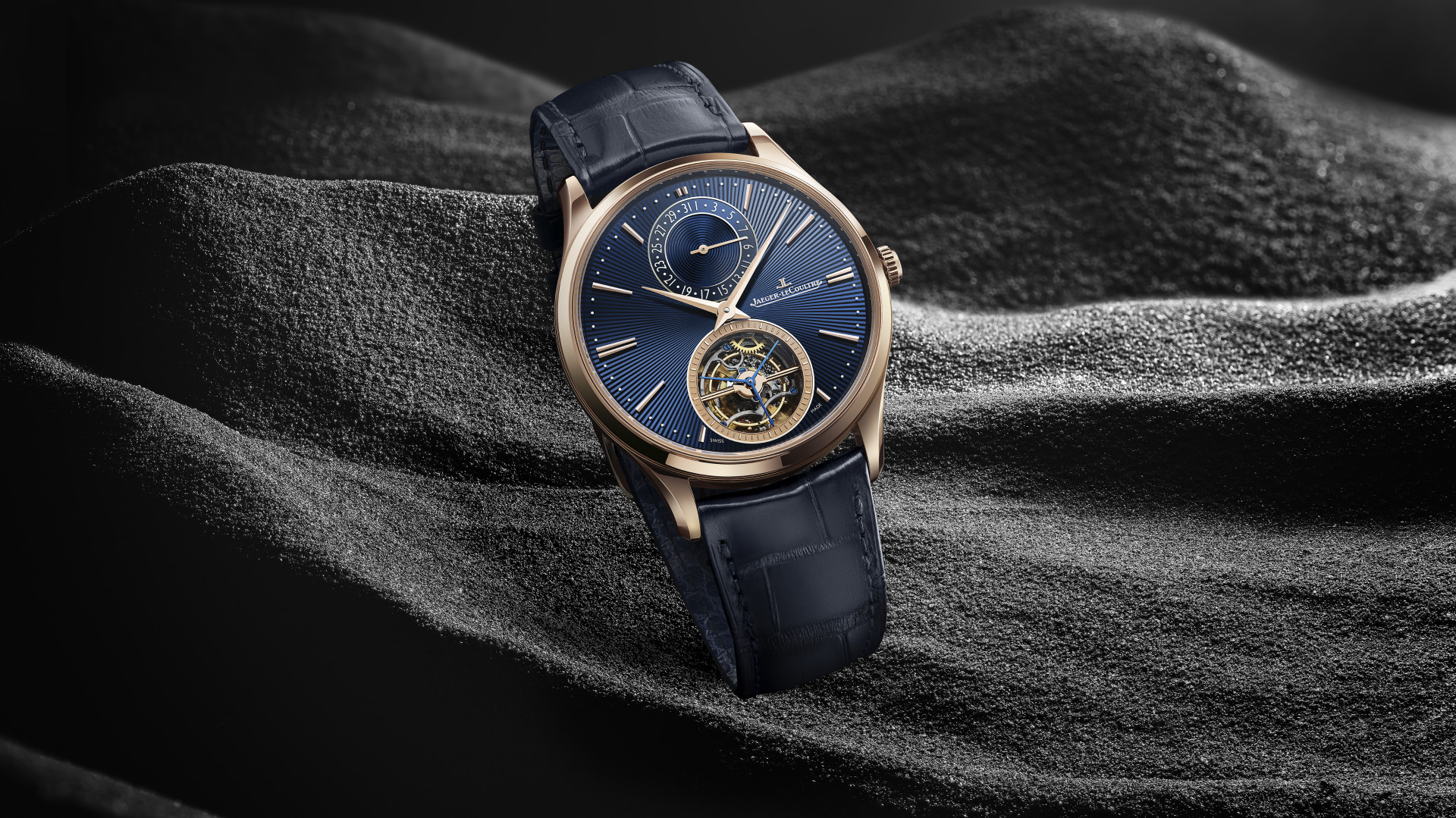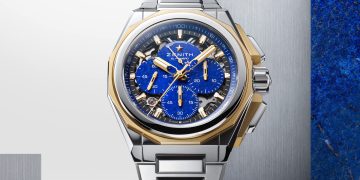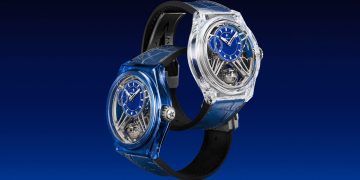Source: Images and content by Jaeger LeCoultre @ Jaeger LeCoultre.

Contrasting with the fully polished pink gold case, the blue dial of the new timepiece provides a dramatic backdrop for the tourbillon and the date display, and reflected light dances across the sunray pattern of the guillochage with every movement of the wrist. The hand-guilloché pattern is a work of immense precision and skill: each of the 180 ‘sun rays’ required six passages of the hand-operated rose engine lathe, making 1,080 lines altogether. Guided only by the eye and hand, the master guillocheur must ensure that every line is absolutely straight, evenly spaced and perfectly aligned, radiating out from the centre to the edges of the dial. In addition, the date sub-dial is hand-guilloché in a circular pattern (known in French as azurage) to create a subtle texture that contrasts with the sunray. This is another work of remarkable precision, representing more than 1,100 gestures in total by the guillocheur.
Once the guilloché work on the main dial is completed, the master enameller applies Grand Feu enamel in multiple layers – one layer at a time, followed by firing at 800ºC and carefully managed cooling – to create the desired intensity and depth of colour. This is a newly developed shade of blue, created by mixing pigments in various proportions and testing the results – a lengthy process of iteration made necessary because the nature of Grand Feu enamel means that the outcome of firing is highly unpredictable.
In the lower half of the dial, a laser-engraved seconds counter provides a visual anchor for the tourbillon aperture; a mirror-polished pink gold bridge secures the tourbillon cage and draws the eye deeper into the mechanism, its transparency and lightness amplified by the contrast with the colour of the surrounding dial.
The strap is alligator in a shade of blue created to perfectly match the dial and, in a further touch of refinement, it is lined with small-scale alligator and fitted with a pink gold folding clasp.








